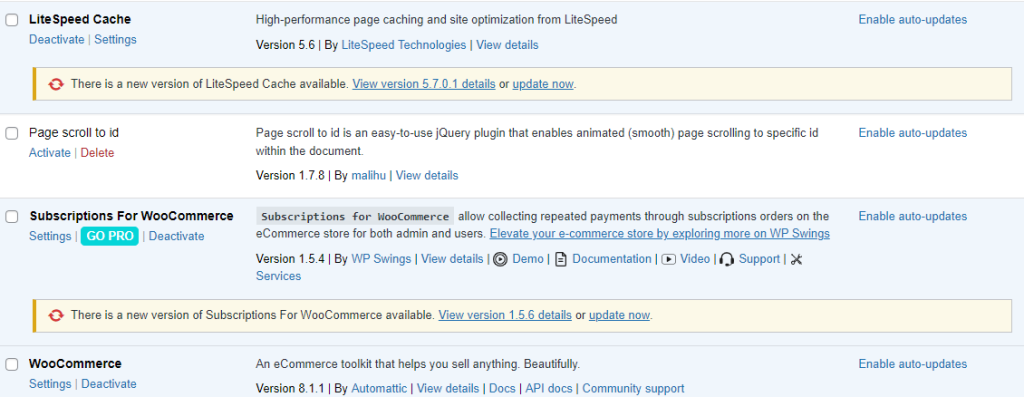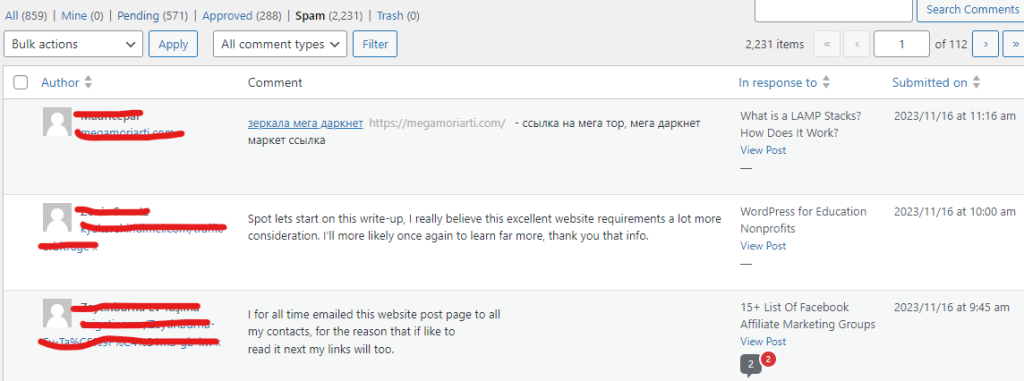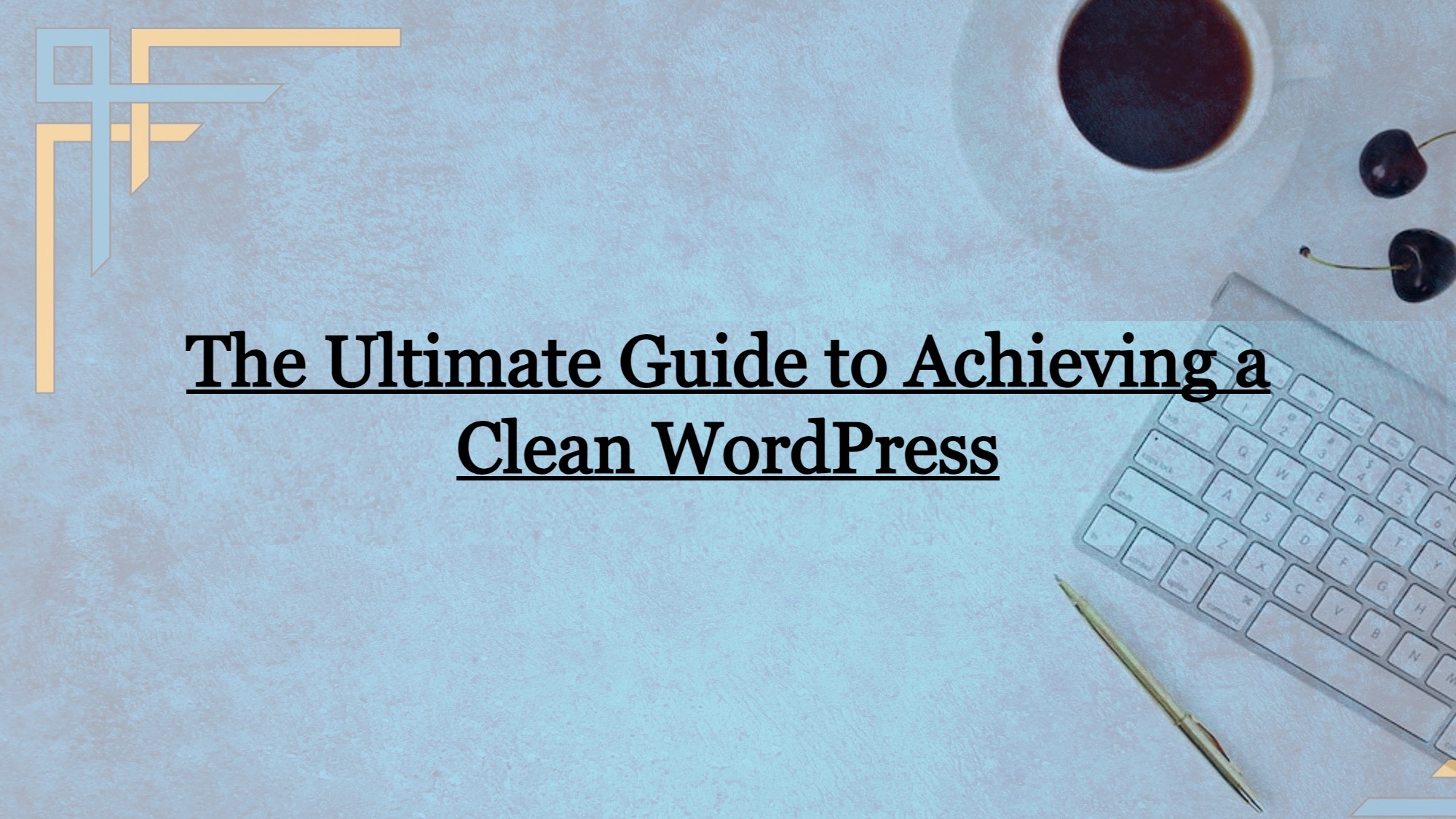In the digital age, where online visibility is paramount, having a clean wordpress and optimized website is essential for success. When it comes to content management systems (CMS), WordPress is a popular choice due to its flexibility and user-friendly interface. However, simply having a WordPress website is not enough; optimizing it for search engines (SEO) is crucial for attracting organic traffic. In this comprehensive guide, we will explore the steps to achieve a clean WordPress website for enhanced SEO performance.
Understanding the Importance of a Clean Website
In the competitive online landscape, a clean and well-optimized website is not just a luxury but a necessity. Users expect fast-loading pages, intuitive navigation, and valuable content. Search engines, particularly Google, prioritize websites that provide a positive user experience. A clean WordPress website not only enhances user satisfaction but also contributes to improved search engine rankings.
The Impact of SEO on Website Visibility
Search engine optimization (SEO) is the practice of optimizing a website to rank higher in search engine results pages (SERPs). When users search for relevant queries, websites that are well-optimized have a higher chance of appearing prominently. SEO involves various strategies, and having a clean WordPress website is a foundational aspect that directly influences SEO performance.
Understanding the Importance of a Clean WordPress Site
1. Page Loading Speed Matters
Search engines, particularly Google, consider page loading speed as a vital ranking factor. A clean WordPress site with optimized images, efficient code, and streamlined plugins contributes to faster load times, improving user satisfaction and search engine rankings.
2. User Experience and Bounce Rates
A cluttered and disorganized website can lead to higher bounce rates, indicating that visitors are leaving your site quickly. A clean and well-structured WordPress site enhances user experience, encouraging visitors to stay longer, explore content, and engage with your pages.
3. Mobile-Friendly Design
With the majority of internet users accessing websites via mobile devices, having a responsive and clean design is imperative. Google’s mobile-first indexing prioritizes mobile-friendly sites, influencing SEO rankings.
Get exclusive access to all things tech-savvy, and be the first to receive
the latest updates directly in your inbox.
4. Effective Crawlability for Search Engines
Search engine crawlers need to navigate and understand your website’s content efficiently. A clean WordPress structure, with organized categories, tags, and sitemaps, ensures that search engines can index your site accurately.
Steps to Achieving a Clean WordPress Website
1. Update WordPress Core, Themes, and Plugins

Regular updates are crucial for security, performance, and compatibility. Ensure that your WordPress core, themes, and plugins are up to date to benefit from the latest features and security patches. It is imperative to keep the WordPress core, themes, and plugins up to date to harness the full spectrum of benefits, including the integration of cutting-edge features and timely security patches.
These updates are the front line of defense against potential security vulnerabilities, as they address and rectify any identified weaknesses, safeguarding your website and user data. Additionally, performance improvements embedded in updates contribute to a faster, more responsive website, elevating the user experience and positively impacting search engine rankings.
2. Optimize Images for Speed
Large image files can slow down your website. Use image compression tools or plugins to optimize images without compromising quality. This significantly improves loading times and positively impacts SEO.
There are several image compression tools and plugins available that can help reduce the file size of images without compromising quality. Here are a few popular ones:
- Smush
- ShortPixel
- Imagify
- Optimole
- EWWW Image Optimizer
3. Choose a Lightweight Theme
Selecting a lightweight and well-coded theme is essential for a clean WordPress setup. Avoid overly complex themes with excessive features that can bloat your site and affect performance.
Here are some popular lightweight themes.
- Astra
- GeneratePress
- OceanWP
- Neve
- Schema Lite
- Sydney
4. Minimize and Concatenate CSS/JS Files
Minimizing and concatenating CSS and JavaScript files reduces the number of server requests and speeds up page loading. Use optimization plugins or manual techniques to achieve this for improved site performance.
5. Clean Up and Optimize the Database
Regularly clean up your WordPress database by removing unnecessary data, and spam comments, and post revisions. Database optimization plugins can automate this process, keeping your site streamlined.
6. Limit and Optimize Plugins

While plugins enhance functionality, an excess of them can impact performance. Evaluate your plugins regularly, deactivate or remove those not in use, and choose lightweight alternatives when possible.

7. Fix Broken Links
Addressing broken links on your website is crucial for user experience and SEO. Broken links, also known as 404 errors, can frustrate visitors and negatively impact search engine rankings. By regularly checking and fixing broken links, you ensure that users can navigate your site seamlessly, enhancing their experience and reducing bounce rates. Additionally, search engines reward websites with clean link structures, contributing to improved search rankings.
8. Eliminate Unused Tags
Efficient tag management is essential for maintaining a well-organized and navigable website. Unused or redundant tags can clutter your site’s structure, making it challenging for both users and search engines to understand the content hierarchy. By eliminating unused tags, you streamline your website’s taxonomy, making it more user-friendly and enhancing its SEO performance. This process also aids in better content organization, ensuring that visitors can easily find relevant information.
9. Deal With Spam Comments

Managing and dealing with spam comments is a crucial aspect of maintaining a healthy and reputable website. Spam comments not only clutter your content but can also harm your site’s credibility. Utilize anti-spam plugins and moderation settings to filter out and prevent spam comments. Regularly review and address comments to ensure a clean and engaging discussion environment. By dealing with spam comments promptly, you foster a positive community and signal to search engines that your site is actively maintained and monitored.
10. Optimize Permalinks for Readability and SEO
Ensure that your WordPress permalinks are structured for both readability and search engine optimization. Use descriptive words in your URLs and avoid generic default structures. A clean and well-organized permalink structure not only enhances user experience but also aids search engines in understanding the context of your content, contributing to improved SEO performance. Regularly audit and update permalinks when necessary to maintain a clear and concise URL structure across your site.
FAQs – Clean WordPress
How can I maintain a clean WordPress site over time?
To maintain a clean WordPress site, implement regular updates, monitor plugin usage, optimize images, and conduct periodic audits of your site’s performance. Consistent attention to these aspects ensures that your site remains efficient, user-friendly, and aligned with best SEO practices.
Can a clean WordPress site positively impact my website’s search engine rankings?
Yes, a clean WordPress site positively influences search engine rankings. Factors like faster loading times, a responsive design, and an organized site structure contribute to improved SEO performance, helping your website rank higher in search engine results.
What are permalinks, and how can I optimize them for SEO?
Permalinks are the URLs of your WordPress site’s pages and posts. Optimize them for SEO by using descriptive words, avoiding generic structures, and ensuring readability. A clean permalink structure aids search engines in understanding the content context and contributes to improved SEO.
How do I optimize my WordPress database for better performance?
Use database optimization plugins to clean up unnecessary data, spam comments, and post revisions. Regularly optimizing your WordPress database ensures efficient data storage and retrieval, contributing to a clean and well-functioning site.
What role does a lightweight theme play in maintaining a clean WordPress site?
A lightweight theme has minimal code and features, promoting faster load times and improved performance. Choosing such a theme ensures that your site remains streamlined and responsive, contributing to a clean and efficient WordPress setup.
Conclusion
In conclusion, maintaining a clean WordPress website is not just a matter of aesthetics but a strategic necessity for optimal performance and search engine visibility. A well-organized and streamlined WordPress site contributes to faster load times, improved user experience, and enhanced SEO rankings. The steps outlined in this guide, from optimizing images and choosing a lightweight theme to implementing browser caching and cleaning up the database, collectively create a foundation for a clean and efficient website.



